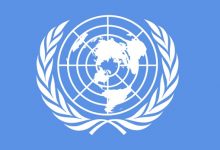15 September 2010 Report on the Situation of Human Rights in the Islamic Republic of Iran to the General Assembly (A/65/370)
United Nations A/65/370
I. Introduction
1. The present report on the situation of human rights in the Islamic Republic of Iran is submitted pursuant to General Assembly resolution 64/176. It provides information on progress made in the implementation of that resolution, in which the Assembly called upon the Government of the Islamic Republic of Iran to address the substantive concerns highlighted in the previous report of the Secretary-General (A/64/357) and the specific calls to action found in previous resolutions of the Assembly (resolutions 63/191 and 62/168), and to respect fully its human rights obligations, in law and in practice, in relation to a number of specifically identified concerns. The report also draws upon observations made by treaty monitoring bodies and the special procedures of the Human Rights Council and in the context of the universal periodic review.2
2. Since the previous report of the Secretary-General and the adoption of resolution 64/176, there have been further negative developments in the human rights situation in the Islamic Republic of Iran. Some encouraging milestones and positive developments, such as the country’s ratification of the Convention on the Rights of Persons with Disabilities in October 2009, its submission of long-overdue periodic reports to the Human Rights Committee and the Committee on Economic, Social and Cultural Rights and the completion of its universal periodic review before the Human Rights Council were unfortunately overshadowed by an intensified crackdown on human rights defenders, in particular women’s rights activists, journalists and Government opponents in relation to post-election unrest in June 2009. Concerns about torture, arbitrary detentions and unfair trials continued to be raised by United Nations human rights mechanisms. There was a noticeable increase in application of the death penalty, including in cases involving political opponents and juvenile offenders. Discrimination persisted against minority groups and in some cases amounted to persecution.
3. The following sections of the report highlight developments that illustrate the progress or lack thereof in implementing the various requests to the Iranian authorities by the Assembly in its resolution 64/176. These include the following thematic areas, outlined in paragraph 4 of the resolution: torture and other cruel, inhuman or degrading treatment or punishment, including flogging and amputations; the death penalty, including public executions; executions of juvenile offenders; stoning as a method of execution; women’s rights; rights of minorities, including the Baha’i community; freedom of religion, freedom of peaceful assembly and association, freedom of opinion and expression and due process of law rights, including in relation to the events following the presidential elections in June 2009. The report also surveys recent developments in the Islamic Republic of Iran’s engagement with the international human rights system pursuant to paragraphs 5, 6 and 7 of the resolution.
2It should be noted that the references, observations and recommendations of the special procedures of the Human Rights Council and treaty bodies referred to in the present report are public information and are contained in the reports published during the reporting period since sixty-fourth session of the General Assembly.









